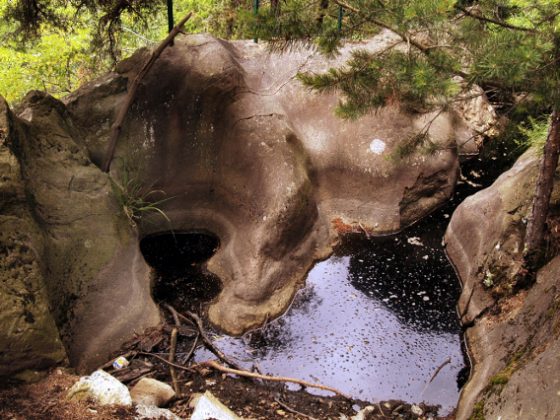Today´s glaciers are just a modest reminder of those that periodically covered the alpine chain and all of Europa from 1 million years ago up until about 10 thousand years ago. The Park contains many traces of these ancient glaciations: ice-polished and striated rock, erosion channels, shafts and potholes. Abrasive action on the bedrock by enormous masses of moving ice created the rounded and polished appearance of the rocks. The channels and potholes, with their varying shapes and sizes, were formed by the action of melting ice. During the warm seasons a portion of the glacier’s surface melted. The streams thus produced sometimes fell into crevasses. These cascades carried with them sand, gravel and hard rock pebbles that fell with a whirling action that dug deeply into the softer bedrock.
The water and its detritus exerted an enormous force due to the height of its fall, which could sometimes be as much as hundreds of metres – the thickness of a valley glacier. Well-rounded pebbles can sometimes still be seen at the bottom of potholes, and the area is dotted with erratic light-coloured granite blocks that were carried along by the glacier and abandoned at its point of withdrawal.
